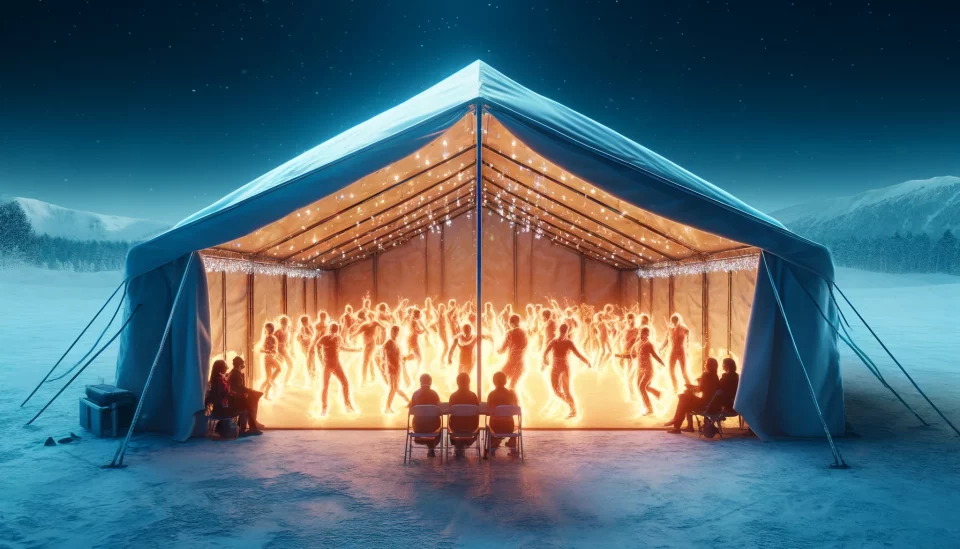I think I can help clarify some common misconceptions about heat pumps with a thought experiment for those who struggle to understand how they work.
A main point of confusion is that people often mix up temperature with heat. Heat refers to energy, not temperature. Some argue that heat pumps, which are primarily vapor compression systems (though other types exist), are not effective at raising the internal temperature of a building to higher levels, such as 24°C, which might be necessary for the elderly.
Imagine a large, open-sided tent set up in a cold area. Picture a few people entering the tent on a chilly winter night and starting to dance to their favorite music. The tent will stay cold, virtually the same temperature inside as outside.
Now, picture the same tent packed full of enthusiastic dancers. Each person emits about a hundred watts of heat, which translates to a hundred joules of energy per second.
With so many people releasing their heat into this open-sided structure, the amount of heat entering the tent far exceeds the energy leaving it.
As a result, the temperature inside the tent rises dramatically. People get very hot—a scenario many might have experienced, myself included, especially during the hedonistic ’90s.
Similarly, a heat pump can effectively heat a space. It’s all about designing a system that can push energy into a building faster than it escapes.
Taking it a step further, consider a wet central heating system, which uses water in radiators or underfloor heating. The key is using the lowest possible water temperature to efficiently transfer heat. The lower the water temperature, the less electricity the compressor in the vapor compression heat pump needs to use.
It boils down to design.
Those who believe heat pumps cannot adequately raise the temperature inside a building are mistaken, although I understand why the confusion between heat and temperature might lead them to think so.
Clearly, if a heating system is not designed well, the heat pump won’t be able to heat the building effectively, much like a poorly designed car engine would perform poorly. Trust me on this.

